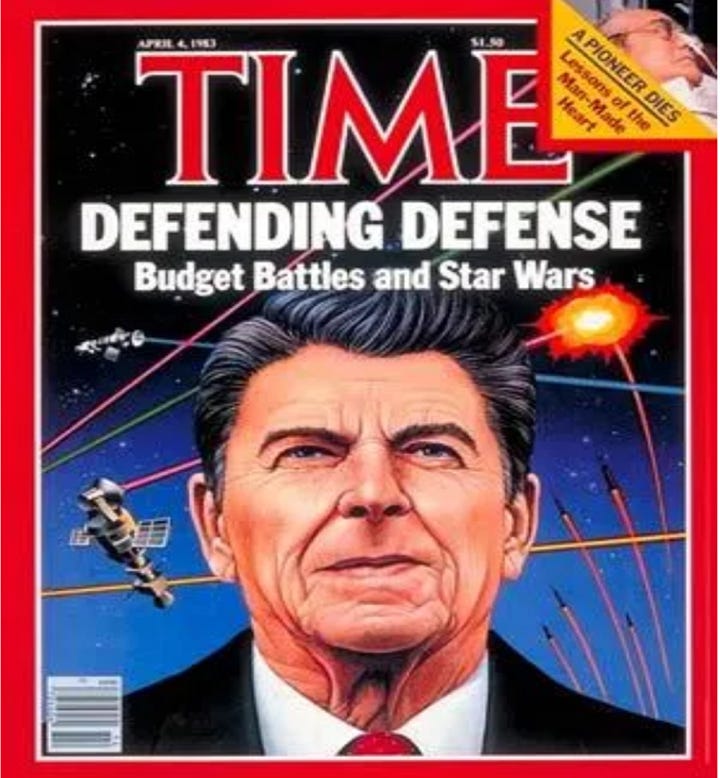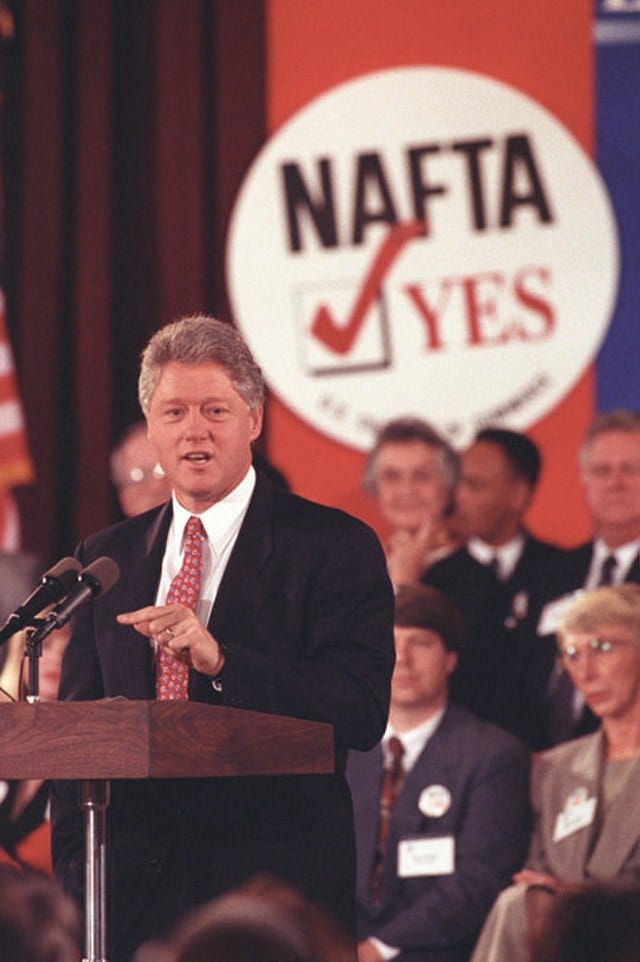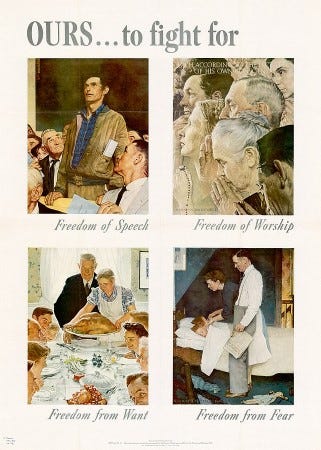Imperial Decline
Charlottesville came up in the presidential debate the other night, or rather Trump’s reaction to it did, “Charlottesville” having become shorthand for the Unite the Right rally in August 2017. We’ll be covering the UTR and Trump’s response this Tuesday when the Welcome to Charlottesville series reaches the penultimate chapter of the Police Stories segment. How timely!
Meanwhile, reading the transcript of the debate and seeing clips brought to mind this post about the Culture Wars, the left-right spectrum, and how to characterize the groups that organized the UTR.
Today I want to pull out that middle part, the basics of the left-right difference in temperament, and how those differences get bridged by successful politicians.
Read the original if you want more of an explanation, but the gist is that everyone loves their own freedom (or almost everyone) but the left and the right differ radically on how we view freedom relating to equality.
People on the left tend to notice the ways in which equality reinforces freedom. Equality is necessary to preserve freedom.
People on the right tend to notice the ways in which equality is in conflict with freedom. Equality often threanens freedom.
The result is that…
People on the left tend to be suspicious of hierarchies.
People on the right tend to be respectful of hierarchies.
Of course in reality people are mosaics. Almost no one likes or hates all hierarchies, and most people—at least those who aren’t heavily involved in politics—tend to be egalitarian in some issues and hierarchical in others.
Since humans are confirmation-bias machines, people on the left and right are constantly finding more evidence that the way we see the world is accurate. The observer on the left notices how the tribe distributes food. (See?! Egalitarians!) The observer on the right notices how the kids give up their seats to their elders at the campfire. (See?! Hierarchy!) So the political spectrum never goes away, and political stability is only achieved when successful politicians assemble political strategies, worldviews, and coalitions that please enough people to form a political consensus.
If you think of a spectrum that goes far-left, left, right, far-right, a political consensus needs to cover a bit more than half of that from anywhere to anywhere.
There have been two such consensuses in my lifetime, the first I barely remember, but which created a powerful and enduring legacy. The second is no longer credible but has not been replaces. The result is that today we find ourselves in Charlottesville and the country is a power vacuum.

New Deal Consensus
From the election of 1932 until the 1970s U.S. politics were dominated by the New Deal Consensus, which I’ve named after the bundle of programs and initiatives President Franklin Delano Roosevelt proposed in response to the Great Depression.
The New Deal Consensus was a center-left consensus that appealed to everyone from most of the far left to almost the entire center left and a great deal of the center right. This made it a huge group that had an enduring power over how the government functioned even when Republicans were presidents.
The New Deal Consensus sought high employment levels, worker protections, an expanded social safety net, government programs, political equality, public works, cooperation between management and labor (this developed during WWII), and federal economic planning and business regulation. FDR’s Four Freedoms are a good summation of the public face to contrast with our own: freedom of speech and worship as we have today, but also freedom from want and freedom from fear. The “War on Terror” under President George W Bush resurrected a government relationship with fear but not ever expressed that way, and any politician in recent memory who spoke about freedom from want would be tarred a socialist. Frankly, even an actual socialist, Bernie Sanders, never based his campaign on everyone having food, clothing, and shelter as forms of freedom.
Not everyone supported the New Deal Consensus, of course, and even among the majority who did there were plenty of arguments over priorities and details, but this framework set the terms of political battles for forty years. Then the consensus split over the Vietnam War, the Cold War, stagflation, and the high crime rates and social upheavals of what is usually called ‘The Sixties’ but mostly happened during the Seventies. The system no longer seemed to work as people expected it to, the worldview didn’t seem to match the world people viewed, the certainties no longer seemed certain.
Reagan Consensus
Maybe it should be called the Reagan-Clinton consensus, or the ‘Neoliberal Consensus’ but the man who made it happen was President Ronald Reagan. Reagan took ideology from Barry Goldwater and political strategy from Richard Nixon, slipped through the cracks of the New Deal Consensus in 1980 and implemented the Reagan Consensus.
The Reagan Consensus was a center-right consensus that appealed to everyone from most of the far right to almost the entire center right and a great deal of the center left. This made it a huge group that had an enduring power over how the government functioned even when Democrats were presidents.
This consensus favored low taxes, low inflation, free trade, libertarian deregulation and union busting, equality of opportunity, market-based economics, and tough on crime police militarization such as the War on Drugs. This basic consensus, tweaked and modified, was reinforced by the ‘New Democrats’ led by President Bill Clinton.


Not everyone supported or supports the Reagan Consensus, and there have been lots of arguments over priorities and details, but these ideas have set the framework for most arguments and elections until the present day. But like the New Deal Consensus in the late 1970s the Reagan Consensus has now long passed its sell-by date. The Iraqi War, Hurricane Katrina, and the 2008 Great Recession destroyed the legitimacy of this approach in the eyes of most people, yet here we are decades later still waiting for a politician with the skills and understanding to create something new.
What’s Next?
Political campaigns promise to give people stuff while telling a story about why the gifts aren’t gifts, not really, but what the people deserve. The New Deal Consensus promised government programs. The Reagan Consensus promises tax breaks. The New Deal promised political equality. The Reagan Consensus promised equality of opportunity. The New Deal promoted education for participatory citizenship. The Reagan Consensus promoted education to figure out who was the best and brightest.
Obama won the presidency in 2008 running on the banner of ‘change’, and for two years the Democrats controlled all the branches of the government and did a couple of new things (Obamacare and Iran treaty), but mostly he repaired, refurbished, and propped up the old system. He never really tried to create a new consensus because I think he genuinely believed in a liberal version of the Reagan one. Trump won the presidency in 2016 promising change, and for two years the Republicans controlled all the branches of the government, and it seemed like he might really change the paradigm (for better or worse). He withdrew and reworked free trade agreements and harshly enforced immigration laws, but soon he resorted to a Reagan-style government, except minus the friendly public persona. Mostly, I think Trump’s feckless, lazy, and combative temperament didn’t give him the patience, curiosity, or wisdom to do anything else.
Joe Biden was elected on being Not Trump. But in office he actually broke with the Reagan Consensus in some ways, like appointing Linda Khan to the Federal Trade Commission, directing his Justice Department to launch anti-trust cases against corporations, and publicly supporting unions. But his inability to give effective speeches (like FDR and Reagan did) has meant he can’t communicate to the public what he’s doing. Also he doesn’t have the energy, focus, or grassroots support, and doesn’t seem to be supported even by his own staff.
Because Biden arrogantly clung to power too long for the Democratic Party to have a primary this year, their only hope of defeating Trump was to unite behind Kamala Harris, and although I believe the party leaders would have dithered, rank and file united quickly. Vice presidents rarely make popular presidents. In fact vice presidents rarely get elected, but Harris has exceeded expectations. She has run her campaign about as well as she could given the circumstances. Moreover, Trump is a weak candidate who is suffering from nearly as much “cognitive decline” as Biden in my opinion.
Below is my projected electoral map, but go to 270towin and create your own! It’s fun. I don’t think Michigan, Pennsylvania, and Nevada are actually ‘Toss-ups.’ That’s what media pundits call states they don’t know about. Enough voters in those states have already decided how they’ll vote (The election is already over) but without the fine-grained, local newspaper reporting of past generations, we—at least I—just have no way to know what those voters have decided.
But the question is—for the purposes of this post—regardless of who wins this election can either Trump or Harris build a new coalition, an alternative to the Reagan-Clinton consensus? Not likely. Trump is Trump and even more so with what I take to be his cognitive decline. Meanwhile Kamala’s speeches are checklists of fighting for us, equality of opportunity, and tax breaks—the standard Clinton-version of the Reagan approach. Both FDR and Reagan (and Bill Clinton) created the story for their would-be consensus before they took office, and then consolidated power once in office, but with Harris not staking out new territory or new approaches I can’t see how she could change the way the country sees itself. If you’re a Democrat you’re hoping Harris keeps Trump from winning, but it’s not likely we’ll get a new way of looking at the world from this election cycle.
When it does come, what would that consensus be? Honestly, I started writing the Welcome to Charlottesville series because I think the events here in 2017 in the context of Charlottesville’s history and an understanding of cities, will give us some hints.
So subscribe and I’ll see you this week!
We’ll be back Tuesday with the continuation of Welcome to Charlottesville. Thanks for reading and please subscribe and share! Comments are welcome but please no profanity, personal insults, uor ad hominem attacks.



